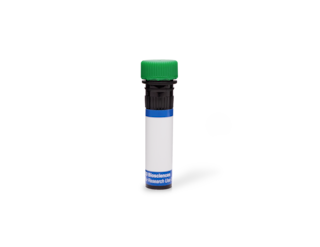-
Reagents
- Flow Cytometry Reagents
-
Western Blotting and Molecular Reagents
- Immunoassay Reagents
-
Single-Cell Multiomics Reagents
- BD® OMICS-Guard Sample Preservation Buffer
- BD® AbSeq Assay
- BD® Single-Cell Multiplexing Kit
- BD Rhapsody™ ATAC-Seq Assays
- BD Rhapsody™ Whole Transcriptome Analysis (WTA) Amplification Kit
- BD Rhapsody™ TCR/BCR Next Multiomic Assays
- BD Rhapsody™ Targeted mRNA Kits
- BD Rhapsody™ Accessory Kits
- BD® OMICS-One Protein Panels
- BD OMICS-One™ WTA Next Assay
-
Functional Assays
-
Microscopy and Imaging Reagents
-
Cell Preparation and Separation Reagents
Old Browser
This page has been recently translated and is available in French now.
Looks like you're visiting us from {countryName}.
Would you like to stay on the current location site or be switched to your location?
BD Transduction Laboratories™ Purified Mouse Anti- PSD-95
Clone 16/PSD-95 (RUO)





Western blot analysis of PSD-95 on a rat cerebrum lysate. Lane1: 1:250, lane 2: 1: 500, lane 3: 1:1000 dilution of the mouse anti- PSD-95 antibody.

Immunofluorescence staining of PC12 cells (Rat neuroblastoma; ATCC CRL-1721).




Regulatory Status Legend
Any use of products other than the permitted use without the express written authorization of Becton, Dickinson and Company is strictly prohibited.
Preparation And Storage
Recommended Assay Procedures
Western blot: Please refer to http://www.bdbiosciences.com/pharmingen/protocols/Western_Blotting.shtml
Product Notices
- Since applications vary, each investigator should titrate the reagent to obtain optimal results.
- Please refer to www.bdbiosciences.com/us/s/resources for technical protocols.
- Source of all serum proteins is from USDA inspected abattoirs located in the United States.
- Caution: Sodium azide yields highly toxic hydrazoic acid under acidic conditions. Dilute azide compounds in running water before discarding to avoid accumulation of potentially explosive deposits in plumbing.
Companion Products


PostSynaptic Density (PSD) refers to a dense region of submembranous cytoskeleton found most prominently in postsynaptic membranes of the CNS. Possible functions for the PSD include regulation and aggregation of receptors, structural stabilization of the synaptic junction, and transduction of signals from membrane receptors. Some of the proteins associated with the PSD are fodrin, tubulin, calmodulin, CaM Kinase II, PSD-95, and PSD-93. PSD-95 (SAP90) is a protein that interacts with the NMDA receptor NMDAR2B, neuronal NOS (nNOS or bNOS), and other proteins. PSD-95 contains one SH3 domain in its carboxy-terminal domain, as well as three conserved repeat regions called GLGF or PDZ domains. nNOS, which is concentrated in synaptic junctions, also contains a PZD domain. PSD-95 and nNOS interact via their respective PZD domains, which may mediate the binding of nNOS to skeletal muscle syntrophin.
This antibody is routinely tested by western blot analysis. Other applications were tested in BD Biosciences Pharmingen during antibody development only or reported in the literature.
Development References (5)
-
Brenman JE, Chao DS, Gee SH,. Interaction of nitric oxide synthase with the postsynaptic density protein PSD-95 and alpha1-syntrophin mediated by PDZ domains. Cell. 1996; 84(5):757-767. (Biology). View Reference
-
Cho KO, Hunt CA, Kennedy MB. The rat brain postsynaptic density fraction contains a homolog of the Drosophila discs-large tumor suppressor protein. Neuron. 1992; 9(5):929-942. (Biology). View Reference
-
Fagiolini M, Katagiri H, Miyamoto H. Separable features of visual cortical plasticity revealed by N-methyl-D-aspartate receptor 2A signaling. Proc Natl Acad Sci U S A. 2003; 100(5):2854-2859. (Biology: Western blot). View Reference
-
Fallon L, Moreau F, Croft BG, Labib N, Gu WJ, Fon EA. Parkin and CASK/LIN-2 associate via a PDZ-mediated interaction and are co-localized in lipid rafts and postsynaptic densities in brain. J Biol Chem. 2002; 277(1):486-491. (Biology: Western blot). View Reference
-
Mehta S, Wu H, Garner CC, Marshall J. Molecular mechanisms regulating the differential association of kainate receptor subunits with SAP90/PSD-95 and SAP97. J Biol Chem. 2001; 276(19):16092-16099. (Biology: Western blot). View Reference
Please refer to Support Documents for Quality Certificates
Global - Refer to manufacturer's instructions for use and related User Manuals and Technical data sheets before using this products as described
Comparisons, where applicable, are made against older BD Technology, manual methods or are general performance claims. Comparisons are not made against non-BD technologies, unless otherwise noted.
For Research Use Only. Not for use in diagnostic or therapeutic procedures.